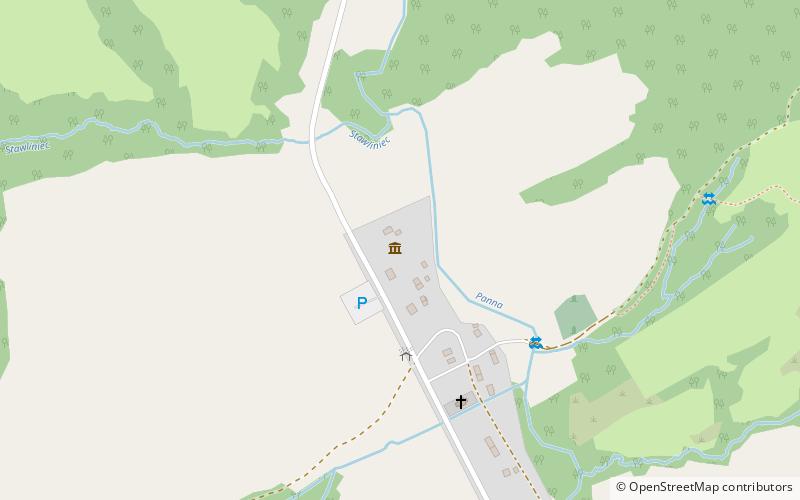Muzeum Kultury Łemkowskiej


Facts and practical information
The Lemk Culture Open Air Museum in Zyndranowa was established in 1968 thanks to the efforts of a native of Zyndranowa, Teodor Gocz. For many years the museum functioned as a private institution, first in the form of a Chamber of Memorabilia in the house of its custodian and originator, and later as an open-air museum located in the village. Currently, the museum has the status of a branch of the Podkarpackie Museum in Krosno.
The open-air museum was created in a Lemko homestead dating back to the end of the 19th century, once owned by Teodor Gocz's great-grandfather, Teodor Kukiela, a village scribe. Gocz inherited it, and when he built a new house, he turned his great-grandfather's hut into a chamber of memorabilia. Among the exhibits were costumes, articles of daily use, and Lemkos' cultural products. The museum was developed and maintained by Teodor Gocz for many years. Only in 1990 it was co-financed by the Krosno Voivodeship Conservator of Monuments.
The main object of the ethnographic museum is Teodor Kukiel's hut dated 1860. A kitchen and a chimney were added to the hut in 1901. The stable was built in 1923 and the pigsty in 1934. The interior of the hut is a reconstruction of the village writer's office with archives, books, letters and photographs from the Lemkivshchyna region. In a separate room, the so-called chamber, sacral exhibits have been collected: fragments of cast-iron crosses, liturgical vestments, copies of icons. There is also a rich collection of Easter eggs decorated in traditional Lemko patterns.
From the tools and household items you can see flails, looms, and querns.
The museum collected also war souvenirs from the operation on the Dukla Pass: uniforms, helmets, weapons and shrapnel. In 1975 a monument to soldiers killed in battles was erected on the grounds of the ethnographic museum. In December 1976 the authorities ordered the army to blow it up. Currently, a small monument and another one commemorating Lemkos - victims of the camps in Talerhof and Jaworzno - remind us of the struggles on the pass.
In the open-air museum there is also a well with a crane, a windmill from Wapienny, a chapel, and a gypsy smithy from Olchowiec. Lemko artists W. Chylak and I. Rusenka are commemorated with memorial plaques.
One of the open-air museum objects is a Jewish cottage, the former property of the Zalman family. The opening of the exhibition of Judaica connected with the region was attended by its sponsor, Samuel Oliner, the only Jew from Zyndran who survived the turmoil of war and now lives in the USA. Next to the house, shattered matzevot were collected, which were once used to make paths, with their inscriptions facing the bottom.
Since 1992 the open-air museum has been organizing annual Feast of Lemkos' Tradition on the Borderland of Cultures Od Rusal do Jana. Every year it is attended by Lemkos from Poland and abroad as well as tourists.
Through the efforts of Teodor Gocz, who passed away on June 5, 2018, the open-air museum publishes a monthly magazine edited by authors writing in Lemko and Polish, dedicated to Lemko culture Zahoroda.
Muzeum Kultury Łemkowskiej – popular in the area (distance from the attraction)
Nearby attractions include: Piotruś, Cerkiew św. Mikołaja, Dukla Pass, Kościół pw. św. Mikołaja.








